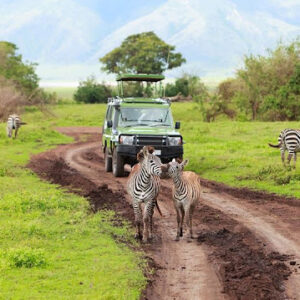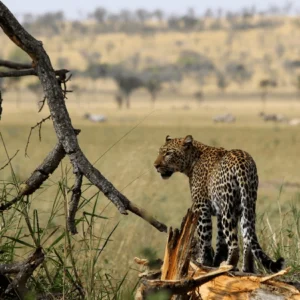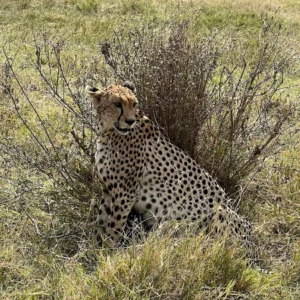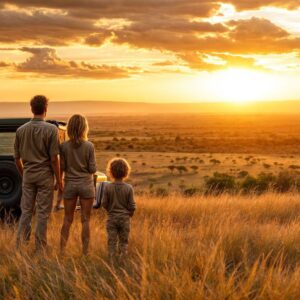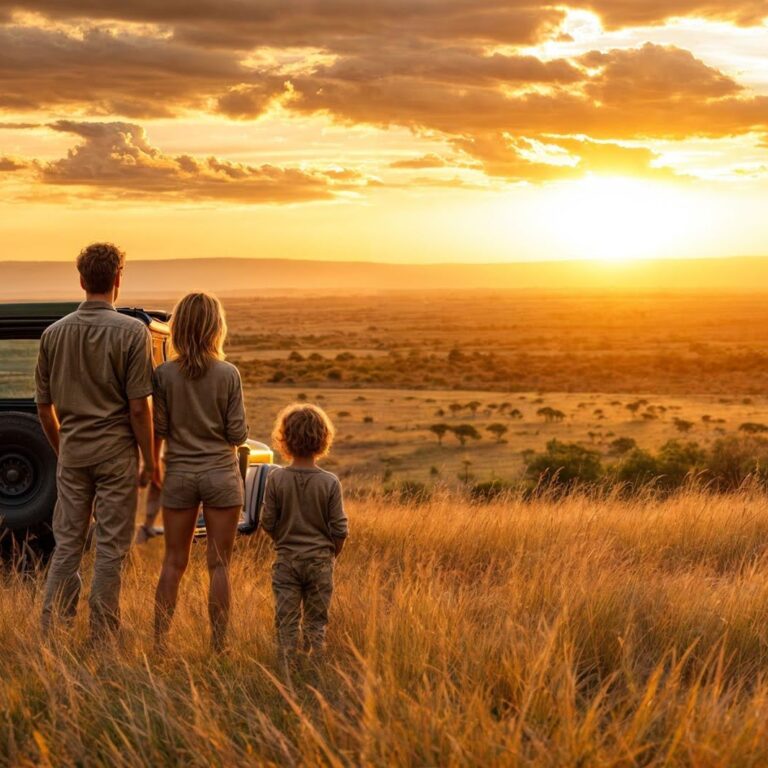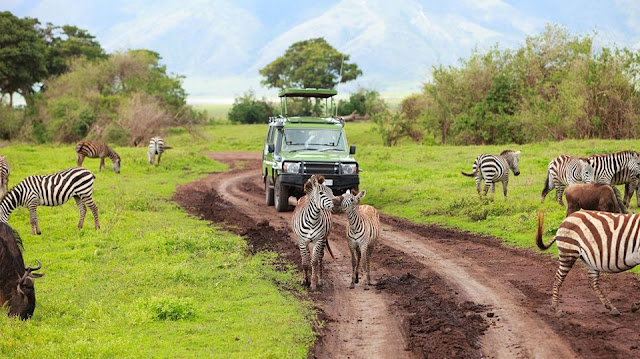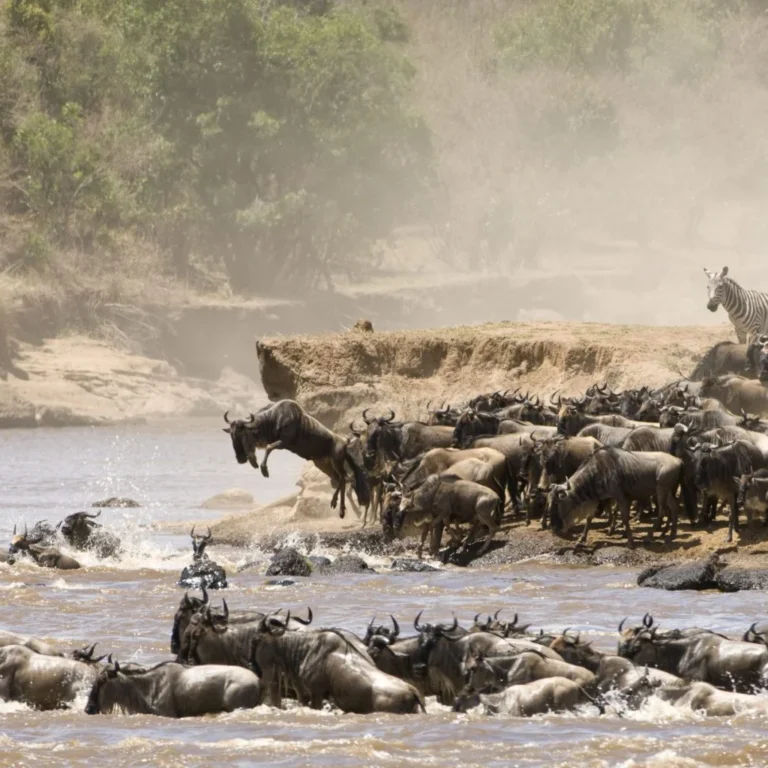Mount Kilimanjaro, Africa’s highest peak and the world’s tallest free-standing mountain, is an iconic natural wonder that draws adventurers and admirers from across the globe. Its majestic, often snow-capped, summit stands as a powerful symbol of the African continent. However, despite its prominent visibility from neighboring lands, a common question often arises: Is Mount Kilimanjaro in Kenya or Tanzania?
The definitive and unambiguous answer is: Mount Kilimanjaro is located entirely within Tanzania.
This clarification is crucial for anyone planning to visit or climb this magnificent mountain, as its geographical and political placement dictate all aspects of accessing and experiencing it is Mount Kilimanjaro in Kenya or Tanzania? However, Kilimanjaro is entirely within Tanzania. In this article, we clarify its location and the best ways to experience it. Mount Kilimanjaro is not subject to territorial disputes: it is located in northeastern Tanzania, approximately 20 kilometers (12.4 miles) from the border with Kenya.5 Feb 2025
1. Geographical Location of Mount Kilimanjaro
Mount Kilimanjaro is situated in northeastern Tanzania, specifically within the Kilimanjaro Region. It lies close to the town of Moshi, which serves as a popular base for climbers preparing for their ascent. The coordinates place it south of the equator, a remarkable fact given its permanent ice cap. The mountain is an isolated volcanic massif, meaning it rises independently from the surrounding plains rather than being part of a larger mountain range. This isolation contributes to its immense visual impact and unique ecological zones.
2. Proximity to the Kenyan Border
The primary reason for the persistent confusion regarding Kilimanjaro’s location is its close proximity to the Kenyan border. The northern slopes of the mountain are merely about 20 kilometers (12 miles) away from the international boundary. From various vantage points in Kenya, most famously from Amboseli National Park, Kilimanjaro offers an incredibly dramatic and photogenic backdrop. The classic image of elephants or giraffes silhouetted against the colossal, often snow-capped, peak is widely used in Kenyan tourism marketing, leading many to believe the mountain is theirs. While these views are indeed spectacular and a highlight for Kenyan safari-goers, they are just that – views from Kenya, not views of Kenya’s territory.
3. Historical Context: The “Gift” That Wasn’t
A popular, enduring myth attempts to explain Kilimanjaro’s location by claiming that Queen Victoria of Britain “gifted” the mountain to her German cousin, Kaiser Wilhelm II, for his birthday, thus shifting the colonial border to include Kilimanjaro in German East Africa (which later became Tanganyika, and then Tanzania).
While a charming anecdote, this story is historically inaccurate. The precise placement of Kilimanjaro within German territory was a result of the Anglo-German Treaty of 1886. This agreement formally divided East Africa into British and German spheres of influence. The boundary line, drawn on a map, notably veered south around Kilimanjaro, placing the entire mountain in German East Africa. This decision was driven by strategic colonial interests, including control over trade routes and resources, rather than a royal gesture. The Germans had already shown significant interest in the mountain, and the British likely conceded it as part of broader territorial negotiations.
4. Climbing Routes on Mount Kilimanjaro
All established climbing routes to Mount Kilimanjaro’s summit originate exclusively from within Tanzania. There are no official or permitted climbing routes that begin in Kenya. The various paths that lead to Uhuru Peak, such as:
Machame Route. The Machame Route, also known as the “Whiskey Route,” is a popular and scenic 6 or 7-day trek up Mount Kilimanjaro. It’s known for its stunning views and offers good acclimatization opportunities, making it a favorite for many climbers. The route starts at Machame Gate on the southwest side of the mountain and approaches the summit from the south before descending via the Mweka route.
Lemosho Route. The Lemosho route is a popular and scenic path for climbing Mount Kilimanjaro, known for its diverse landscapes and excellent acclimatization opportunities. It’s typically an 8-day trek that starts on the western side of the mountain and traverses through rainforests, moorlands, and eventually reaches the summit. The route is considered less crowded than some others and offers a good balance of challenge and beauty.
Marangu Route. The Marangu Route, also known as the “Coca-Cola Route,” is a popular path for climbing Mount Kilimanjaro, known for its well-established trails and dormitory-style hut accommodations. It’s the oldest and, historically, the most popular route up the mountain, offering a relatively gentle ascent through all of Kilimanjaro’s climatic zones.
Rongai Route. Rongai route ascends Mount Kilimanjaro from the north-eastern side of the mountain, along the border between Tanzania and Kenya. The Rongai route retains a sense of unspoiled wilderness. The Rongai route is the only route that approaches Kilimanjaro from the north.
Umbwe Route. The Umbwe Route is a challenging, steep, and direct route up Mount Kilimanjaro, known for its rapid ascent and low traffic. It’s a popular choice for experienced climbers seeking a more adventurous and less crowded path, but it’s also associated with a higher risk of altitude sickness due to the quick elevation gain.
Northern Circuit Route. The Northern Circuit Route is the longest route up Mount Kilimanjaro, known for its scenic beauty and high summit success rate due to excellent acclimatization. It circles the mountain’s northern slopes, offering diverse landscapes and a less crowded experience. The route begins similarly to the Lemosho route before diverging north and then east, eventually approaching the summit from the east.
All commence from park gates situated in Tanzania. This means that climbers must enter Tanzania to begin their expedition.
5. Kilimanjaro’s Volcanic Cones
Mount Kilimanjaro has three volcanic cones: Kibo, Mawenzi, and Shira. Kibo is the highest and is currently dormant, Is Mount Kilimanjaro in Kenya or Tanzania? while Mawenzi and Shira are extinct. Kibo’s dormant state means it could potentially erupt again in the future, though the last significant eruption was hundreds of thousands of years ago. Mount Kilimanjaro is not a single, sharp peak but a massive stratovolcano comprising three distinct volcanic cones:
Kibo. The central and highest cone, home to Uhuru Peak (5,895m/19,341ft), the highest point in Africa. Kibo is dormant but not extinct, with faint fumarolic activity still observed in its crater.
Mawenzi. The second-highest peak (5,149m/16,893ft), a jagged, eroded pinnacle to the east of Kibo. It is an extinct volcano.
Shira. The oldest and most eroded cone (3,962m/13,000ft), forms a broad plateau on the western side of the mountain. It is an extinct volcano. These three cones are entirely contained within Tanzania’s borders, contributing to its status as a single, unified mountain system.
6. Why This Matters for Climbers and Travelers
For climbers and travelers, understanding the principles of responsible trekking and the effects of altitude is crucial for a safe and enjoyable experience. Responsible trekking ensures ethical practices towards local communities and the environment, while proper acclimatization minimizes the risks of altitude-related illnesses. Understanding Kilimanjaro’s clear location within Tanzania is essential for practical planning:
Entry and Exit. All international flights for Kilimanjaro expeditions land at Kilimanjaro International Airport (JRO), located in Tanzania. Visa requirements and immigration procedures are specific to Tanzania.
Permits and Management. Kilimanjaro National Park is managed by the Tanzania National Parks Authority (TANAPA). All climbing permits, park fees, and rescue fees are paid to and administered by Tanzanian authorities.
Local Economy. The entire climbing industry, from guides, porters, and cooks to local tour operators and hotels, is based in Tanzania, providing significant economic benefits and livelihoods for Tanzanian communities.
7. Best Time to Climb Mount Kilimanjaro
While Kilimanjaro is accessible year-round, the best times to climb are during the dry seasons: January to March and June to October. These periods offer clearer skies, less rainfall, and generally more favorable climbing conditions, which contribute to higher summit success rates and better photographic opportunities.
8. Kilimanjaro Wildlife and Natural Beauty
Kilimanjaro National Park boasts a rich diversity of wildlife and stunning natural beauty, showcasing unique ecosystems from rainforests to alpine deserts. The mountain’s various zones, including rainforests, moorlands, and alpine deserts, support diverse flora and fauna, making it a captivating destination for nature enthusiasts. Beyond being a climbing challenge, Kilimanjaro boasts incredible natural beauty and diverse ecosystems. As climbers ascend, they traverse several distinct climatic zones, each with unique flora and fauna:
Rainforest. Home to various monkey species (blue monkeys, black-and-white colobus monkeys) and a rich birdlife.
Heath and Moorland. Characterized by giant heathers and lobelias, with possibilities of sighting smaller antelopes and unique bird species.
Alpine Desert. A stark, lunar-like landscape with very sparse vegetation and limited wildlife, primarily small rodents.
Arctic Summit. The icy realm of glaciers and rock, with no permanent wildlife.
9. Kilimanjaro Climatic Zones
Mount Kilimanjaro boasts five distinct climate zones, transitioning from lush rainforest at the base to arctic conditions at the summit. These zones, in order of ascending altitude, are the Bushland/Cultivation Zone, Rainforest Zone, Heath and Moorland Zone, Alpine Desert Zone, and Arctic Zone. The journey up Kilimanjaro is often described as walking from the equator to the Arctic in a matter of days, due to its distinct ecological zones:
Cultivation Zone (800m – 1,800m). The lower slopes, where local Chagga communities farm coffee, bananas, and other crops. The cultivation zone on Mount Kilimanjaro, located between 800m and 1,800m (2,600ft to 5,900ft), is characterized by its lush, fertile lands and villages. It is primarily used for farming, with crops like bananas and coffee being cultivated due to the high annual rainfall and rich volcanic soil.
Rainforest Zone (1,800m – 2,800m). Dense, humid forest teeming with plant and animal life. The Rainforest Zone on Mount Kilimanjaro, ranging from 1,800m to 2,800m (6,000 to 9,200 feet), is a lush, vibrant ecosystem characterized by dense forest, high humidity, and abundant wildlife. This zone receives significant rainfall, supporting a rich biodiversity of flora and fauna, including towering trees, mosses, ferns, orchids, and various monkey and bird species.
Heath and Moorland Zone (2,800m – 4,000m). Open grasslands and shrubland with unique high-altitude flora. The Heath and Moorland Zone on Mount Kilimanjaro, situated between 2,800m and 4,000m (9,200ft to 13,100ft), is characterized by open spaces, distinctive vegetation like giant heathers and lobelias, and sweeping views. Temperatures are cooler than the lower rainforest, with daytime temperatures around 50°F (10°C) and nighttime temperatures potentially dropping below freezing.
Alpine Desert Zone (4,000m – 5,000m). Arid, rocky, and barren landscape. The Alpine Desert Zone on Mount Kilimanjaro, spanning from 4,000 to 5,000 meters (13,100 to 16,400 feet), is characterized by harsh, rocky terrain with sparse vegetation and extreme temperature fluctuations. This zone is known for its volcanic rocks, ash, and gravel, with minimal plant life like lichens and tussock grasses. Temperatures can be scorching during the day and drop to sub-zero at night.
Arctic Summit Zone (5,000m+). The volcanic peak, characterized by rock, ice, and glaciers. The Arctic Zone on Mount Kilimanjaro is the highest and coldest region, located between 5,000m (16,400 ft) and 5,895m (19,341 ft), the summit. This zone is characterized by its extreme cold temperatures, low oxygen levels, and stark, icy landscape. Climbers attempting to reach Uhuru Peak, the highest point in Africa, must traverse this zone at night, often facing below-freezing temperatures and strong winds.
10. Preparing for a Kilimanjaro Climb
Preparing for a Kilimanjaro climb requires a multi-faceted approach focusing on physical fitness, mental fortitude, and proper gear. Prioritize building cardiovascular endurance, strength training, and acclimatization strategies. Additionally, research your chosen route, understand daily elevation gains, and ensure you have the necessary gear and altitude medication. Regardless of its location, climbing Kilimanjaro requires significant preparation. This includes:
Physical Fitness: Rigorous training with cardio, strength, and endurance.
Acclimatization Strategy. Choosing a longer route (7-9 days) is highly recommended for better acclimatization and higher summit success.
Reputable Operator. Select a tour company with experienced guides, strict safety protocols, ethical porter treatment, and quality gear.
Proper Gear. Invest in appropriate layered clothing, a warm sleeping bag, and essential trekking equipment.
Travel Insurance: A comprehensive policy covering high-altitude trekking and emergency evacuation is non-negotiable.
Kenya & Tanzania: A Great Migration Safari Adventure 2025/2026
How high is Mount Kilimanjaro? Everything you need to know
Kilimanjaro | Height, Map, Country, Figures, Location & Facts
Where to Stay to See the Wildebeest Migration
The Best Time to Go on an African Honeymoon
Final thought
Mount Kilimanjaro is unequivocally a jewel of Tanzania. Its status as Africa’s highest peak contributes immensely to Tanzania’s national identity and tourism industry, offering climbers an unparalleled adventure within its borders.

